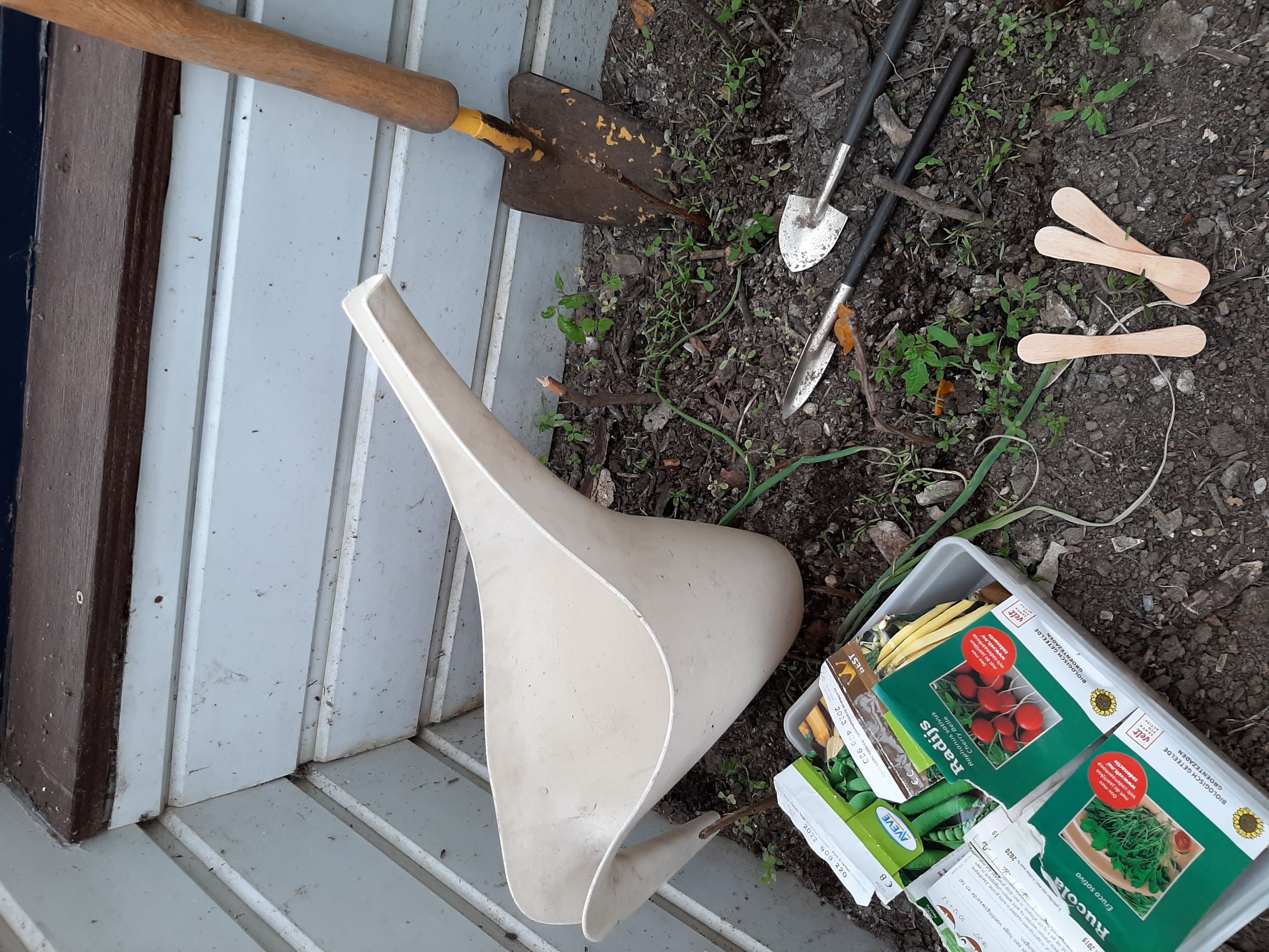Usually they are beginners who keep asking the same questions on social media every year. For Dummies, in a nutshell ... If you click on the links you will come to other nutshells about this.
How deep?
Rule of thumb: 2 to 4 times the thickness of the seed. A little more or less really doesn't hurt.
Light, sandy soil dries out easily (and (both seed and soil) blows away, so quite deeper. Heavy clay soil can become impermeable, so less deep.
You can fill the seed trowel and cover it with a mixture of soil rich in humus that retains moisture better mixed with soil from the spot. Half-half, or according to availability.
Important: keep it moist, otherwise the seed (with possible root and stem) will die. Not wet, because then it will mold.
Light starters (e.g. grass, strawberry, lettuce, tobacco) may lie on the ground. Cover or rake a little to prevent them from blowing away. Broadcasting (for grass and grain) is explained here.
Seeds are sown, plants are planted (and potatoes are planted). (The difference? )
Protect seeds
Seeds are also food. Think of muesli or chicken food. A.o. we make our bread from ground grain. Smart birds sometimes infest a field, and empty part of the seed trench. Sow deep enough, using scarecrows moving in the wind and stumbling wires (such as over a pond, against herons). Ground cover helps. Chicken wire tunnels too.
 Make your own potting soil
Make your own potting soil
Collect autumn leaves and let them perish. Then you have beautiful, black leaf soil.
When you mix it with other natural material that decays, we call it compost. Is also fine.
Soaking seeds
Seeds are kept dried, otherwise they will mold and rot. But they need moisture to come to life.
I soak large seeds (peas, beans, corn, sunflower) for 24 hours (by simply placing them under lukewarm water). They do not have to take the starting stock of moisture out of the ground. That saves them a lot of time.
I don't find it useful for small seeds. The damp gunk will then stick to your fingers. Optionally, you can soak them in a slightly damp kitchen paper, and then place the strips in the seed channel.
When to sow?
You start a vegetable garden when the frost period is over. This is usually in March or April. Or after the ice saints (May 11-14). After that, the chance of cold spring weather and late night frost is less, and young plants are less likely to freeze. So there is no exact date. It could differ from year to year. The timing also depends on latitude, location, slope, soil, climate change, seed type, temperature (day / night), number of hours of sunlight.
On seed package , sowing calendars or vegetable garden calendars you will find the suitable periods for early and late varieties. Spread the sowing over time: better one head of lettuce every week than 35 heads in week 25.
Biodynamic agriculture also takes into account the position of celestial bodies for the appropriate sowing time.
You can sow earlier behind glass in a bowl on the windowsill, or in a greenhouse or hotbed, and then harden off later). Or use a fruit wall, beds, etc. tips for sowing and harvesting earlier and later.
Weaning or transplanting
What you have sown indoors is probably too close together. Taking into account the dimensions of the mature plant, you should therefore wean out. Not all vegetables tolerate that. Root crops hate it. Leeks have no problem with it. Especially the very fine, invisible hair roots break and dry out quickly. With soil, transplanting from a pot usually works much better.
You can make (comfrey) concentrate and growth hormone yourself to stimulate growth.
Issues
Bolting: plants grow large (too) quickly with a weak, thin stem. Then they grew too fast, too warm. Broilers are ready in 6 instead of 18 weeks. Why would you want superfast supersized tomatoes or vegetables? Give them the time they need to come up and develop (e.g. potato: 65-90 days).
Shrivel: probably too dry, too hot.
Mold or rot: probably too wet, too little ventilation.
Digging or plowing causes bare soil that dries out easily. In organic horticulture we avoid this, among other things, by ground cover, intermediate crops and mulching.
Watering
Do not water cold on warm soil and plants (in the greenhouse), that is a cold shower. Do it on the ground, not on the plant, and preferably in the evening.
If necessary, use the baptism principle, or use an olla.
Cost
You don't have to buy a garden centers to do gardening. Nature does not need that either.
You don't need a wooden (or worse, plastic) box or greenhouse. Just work on and in the ground.
You do not need a sterilized "cultivation soil". Soil with life in it. So not just sand.
You do not need a root cloth or covering plastic. All dry, organic material is suitable as ground cover mulch. (At least if it’s without sprays.)
You do not need fertilizers or dried fertilizer granules. All accumulated moist organic material (again without poison) decays into compost.
Alternatives to purchase seeds and plants are swapping and borrowing (seed library), possibly buying together.
Need more info? Use the search function on the website.
Start small, and experience what you can do.
